 Technology peripherals
Technology peripherals
 It Industry
It Industry
 Huawei MateBook D16/14 notebook experience: Intel 13th generation Core support, 5,000 yuan, an excellent choice for entry-level AI PC
Huawei MateBook D16/14 notebook experience: Intel 13th generation Core support, 5,000 yuan, an excellent choice for entry-level AI PC
Huawei MateBook D16/14 notebook experience: Intel 13th generation Core support, 5,000 yuan, an excellent choice for entry-level AI PC
Friends who follow the technology circle believe that "2024 is the first year of AI PC" has recently come across. Yes, this year the entire PC industry has been committed to creating an AI-driven transformation experience. Therefore, if you want to upgrade to a new laptop this year, AI is undoubtedly a key area to consider.
The MateBook series is based on the all-scenario intelligent use experience as its selling point. Many people may think of Huawei’s MateBook. Because they have always used "all-scenario intelligence" as their selling point, with the advent of the AI PC era, MateBook should have a broader space for display.
Just recently, this site got hold of two notebooks, MateBook 14 and MateBook D16, previously launched by Huawei, both of which are equipped with Intel 13th generation Core processors. We know that Intel is also the pioneer and leader in the field of AI PC. What kind of sparks can the combination of the two create? Let us find out through actual experience.
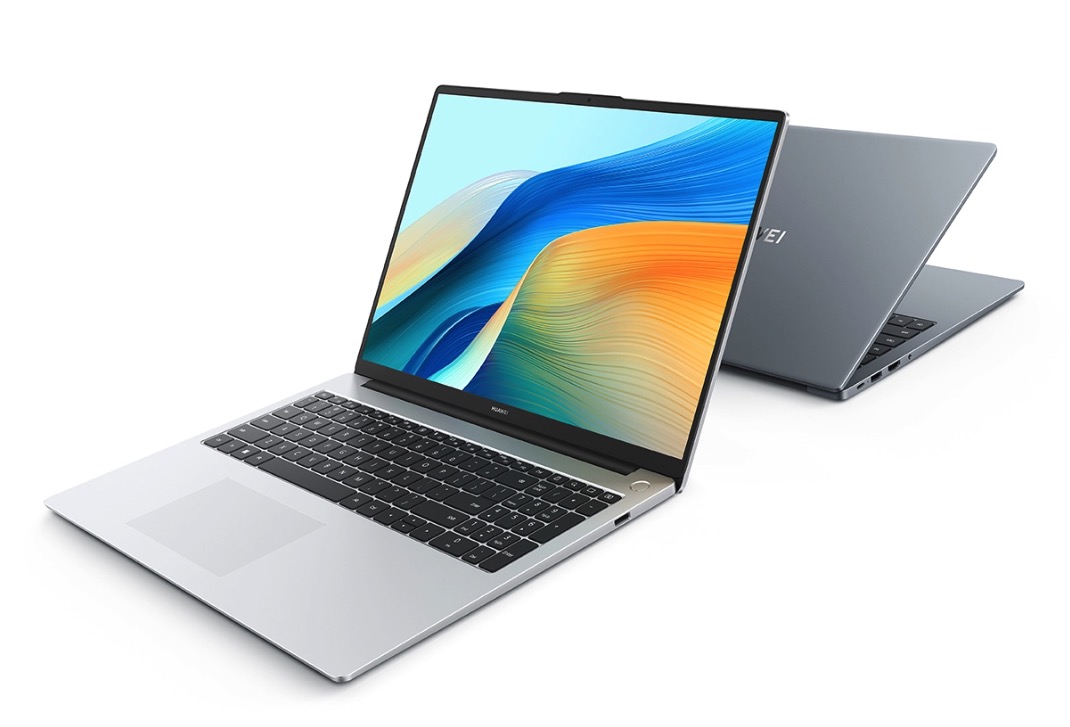
Basic general performance experience: 13th generation Core performance is eye-catching
The processors of these two laptops are Intel’s 13th Generation Core i5, MateBook 14 is equipped with i5-1340P processor, while MateBook D16 is equipped with i5-13420H processor.
Intel’s 13th generation Core processor uses an improved version of the Intel 7 process technology and has a high-performance hybrid architecture design. The performance core uses a Raptor Cove architecture that is faster than the previous generation. The optimized voltage and frequency curves allow It can also have better performance on low-voltage notebook processors, while the L2 cache capacity is increased to 2MB and the maximum frequency is increased to 600MHz. In terms of energy efficiency core, it is still the Grace Mont architecture, but the number of cores is doubled, up to 16 cores, 4MB L2 cache per cluster, and up to 4.3GHz turbo frequency.
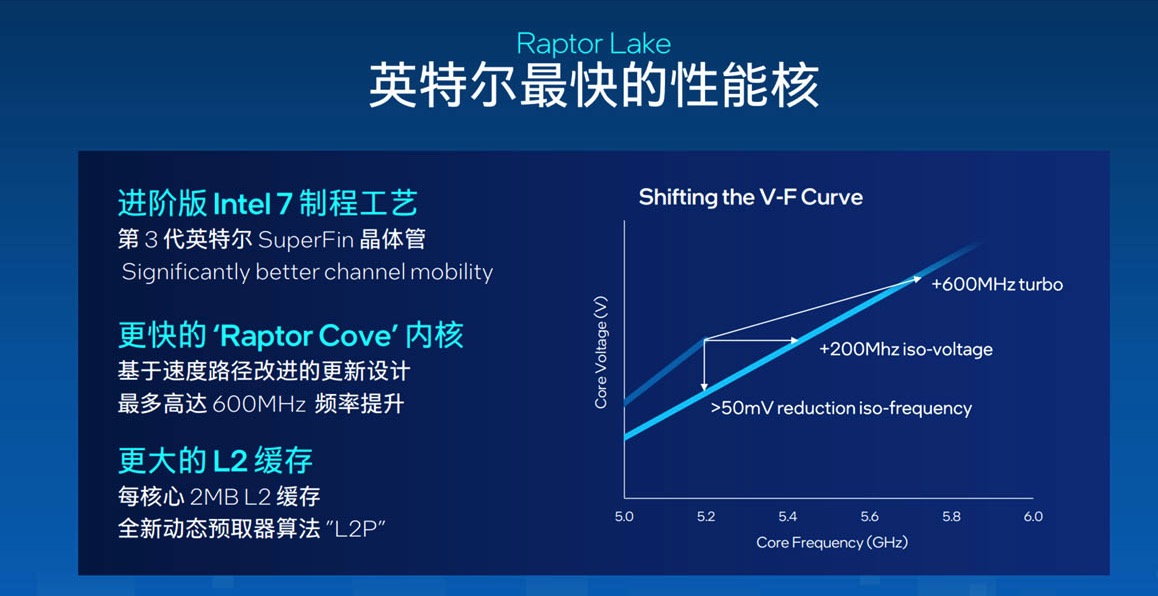
In summary, the 13th generation Core has brought about a 15% generation-to-generation performance improvement in single-threaded performance, and the multi-threaded improvement has reached 41%. At the same time, it also brings very good energy efficiency performance, making the hybrid architecture more powerful and complete.
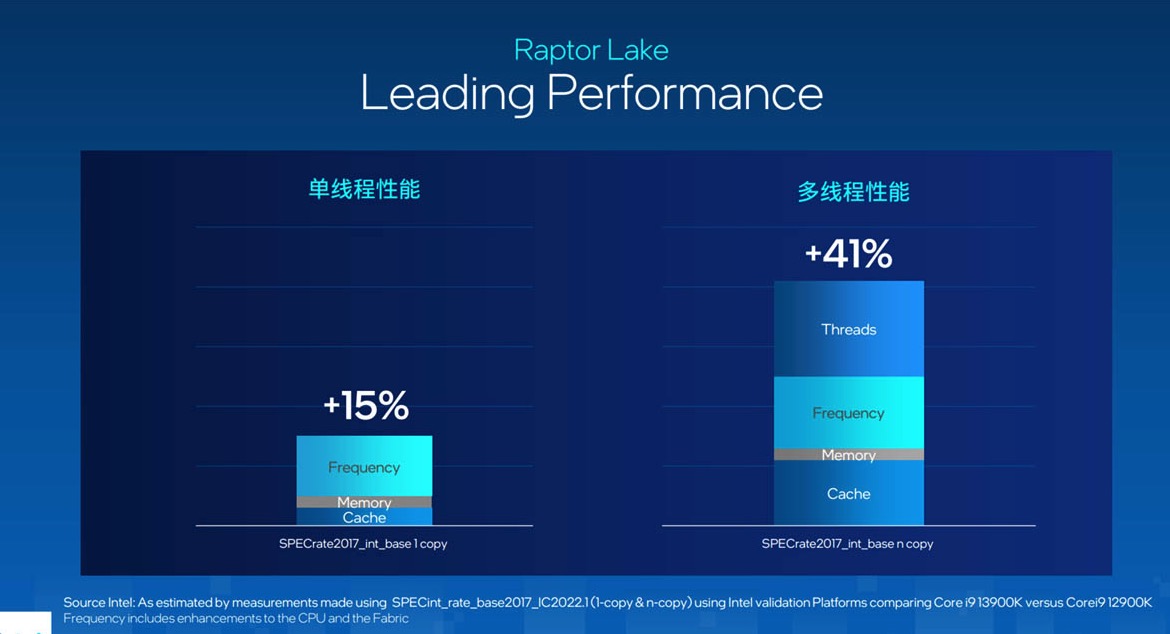
At the same time, the 13th generation Core also has a further optimized Intel thread scheduler, and supports up to DDR5-5600 and DDR4-3200 at the same time. 128GB RAM and XMP3.0, achieving dynamic overclocking, supporting PCIe Gen5×16 in terms of IO and connection performance, having up to 2 independent Thunderbolt 4 controllers, and supporting Intel Killer Wi-Fi 6E and Bluetooth low-power audio.
After getting Huawei MateBook 14 and MateBook D16 notebooks, this site also tested their basic performance for the first time,
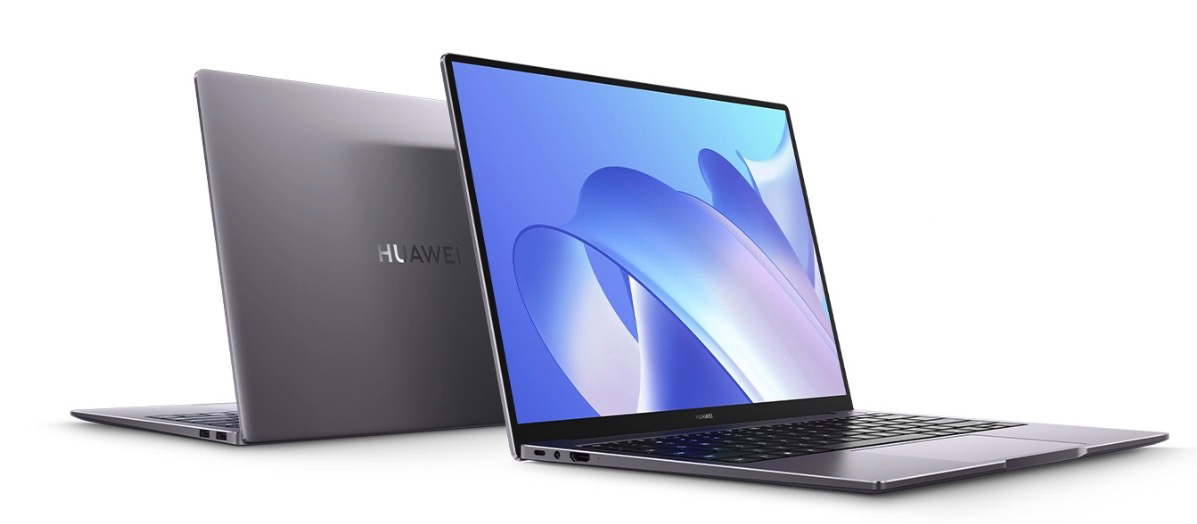
The first is the MateBook D16 equipped with the 13th generation Core i5-13420H processor. This processor has 8 cores (4P 4E) and 12 threads. The base frequency is 2.1GHZ and the maximum turbo frequency can reach 4.6GHZ. Three The level cache is 12MB and the TDP power consumption is 45W.
This processor achieved a single-core score of 742.9 points and a multi-core score of 5244.9 points in the CPU-Z benchmark test. The performance is still very good.
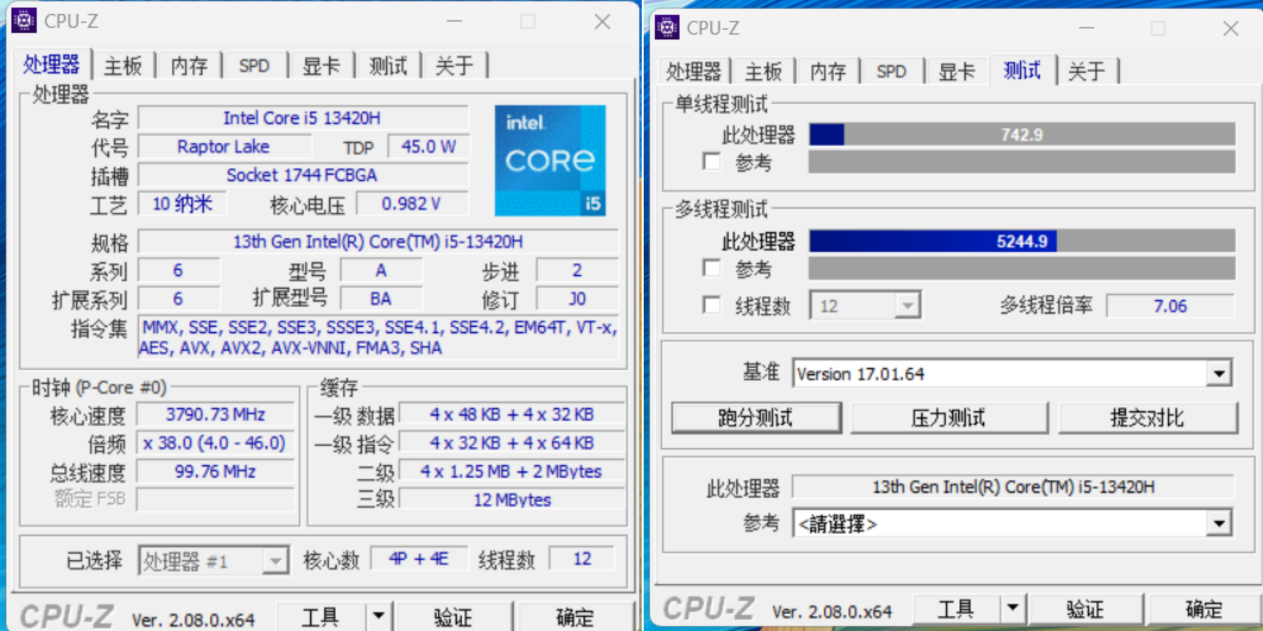
Look at the MateBook 14 equipped with the 13th generation Core i5-1340P processor. i5-1340P has 12 cores (4P 8E) and 16 threads, the maximum core frequency is also 4.6GHz, 12MB L3 cache, and TDP is 28W.
In the CPU-Z benchmark test, the single-core score of MateBook 14 is 737.1, and the multi-core score is 6010.3 points. The multi-core performance is higher than that of MateBook D16, and the overall performance is also very strong.
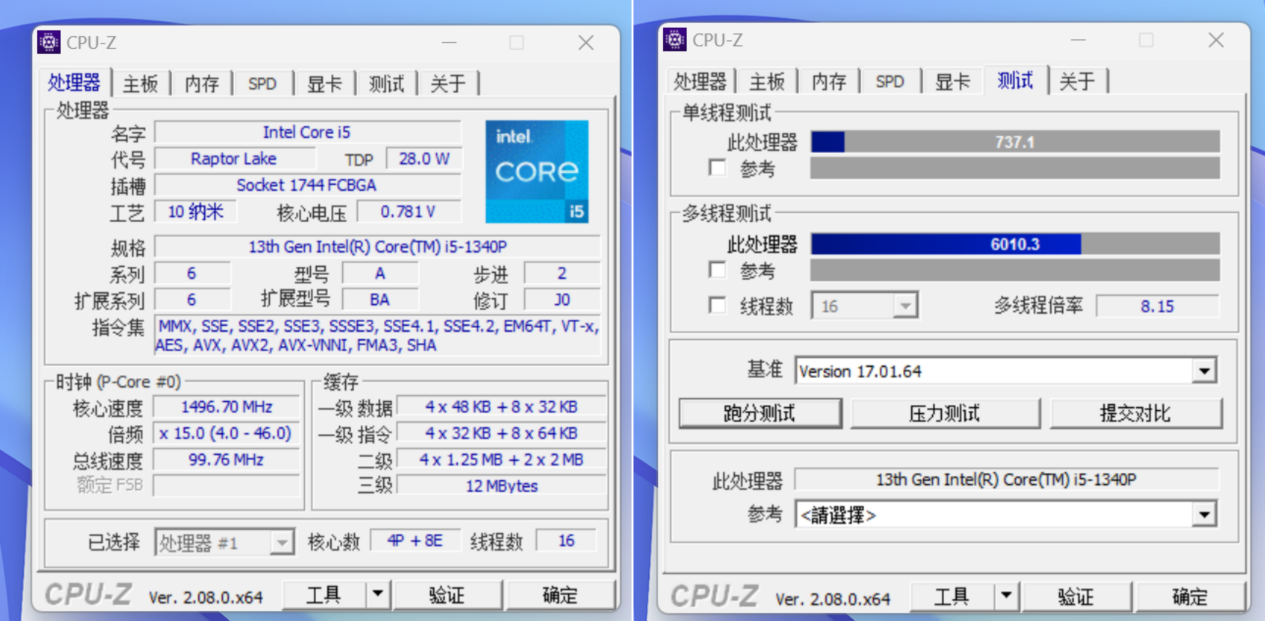
This site also used CineBench R23 for testing, for your reference. Among them, MateBook D16 has 11063pts multi-core and 1724pts single-core.

The MateBook 14 has a single-core score of 1717pts and a multi-core score of 11503pts. Although the single-core performance is not as good as the MateBookD16, the more energy-efficient cores bring It has better multi-core performance than the former. It can be said that both have their own merits.

GPU 方面,MateBook D16 的13 代酷睿i5-13420H 處理器擁有Intel UHD 13th Gen 核顯,具備48EU,顯示卡最大頻率可達1.2GHz ,小編也用《3D Mark》的Time SPY 測試了該GPU 的性能,成績為1164 分,對於輕薄辦公本來說也是很亮眼的表現了。
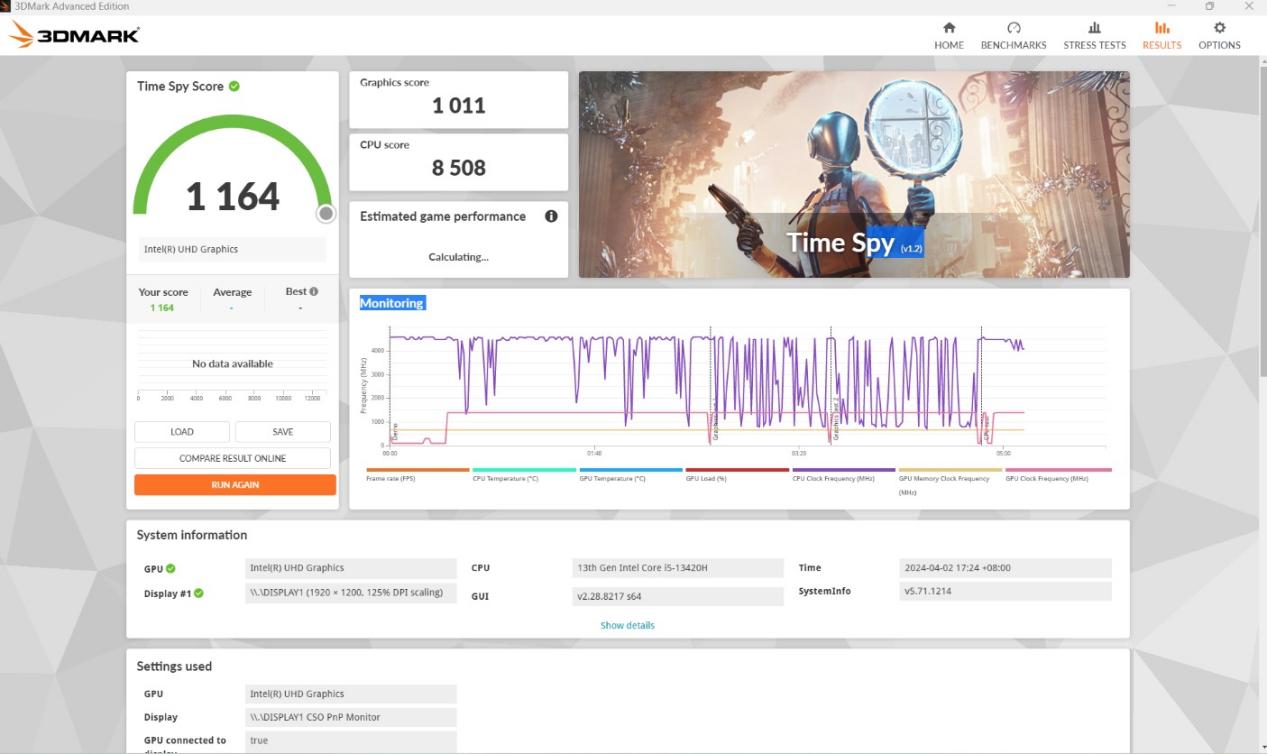
測試過程中,本站測得機身C 面維度最高為31.2℃,溫度不高,可見酷睿i5-13420H 對於能耗的控制還是很出色的。
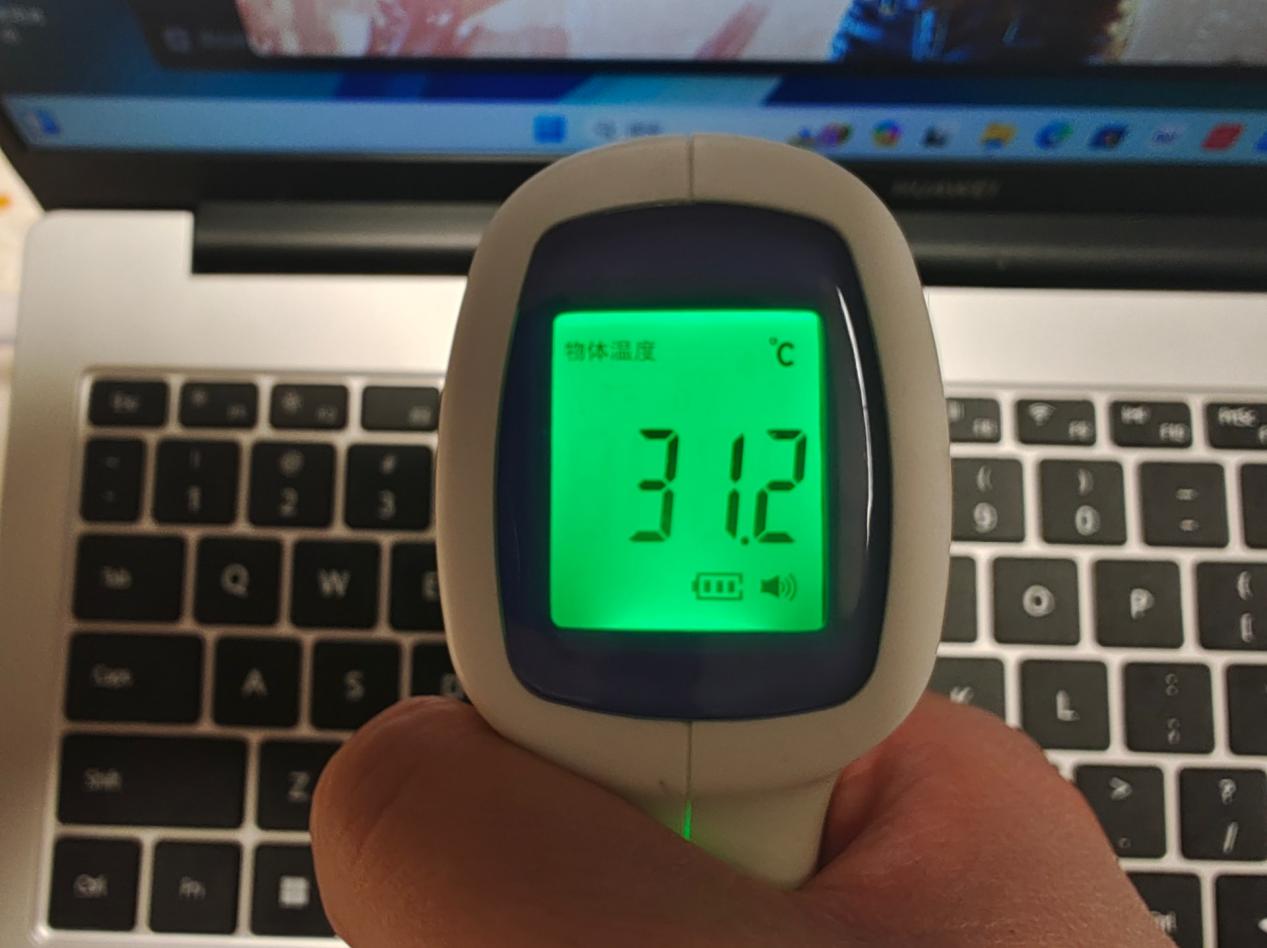
MateBook 14 方面,酷睿i5-1340P 處理器整合了Iris® Xe 核顯,80EU 執行單元,頻率升級到1.45GHz,《 3D Mark》的Time SPY 成績更是達到了1689 分,性能相比MateBook D16 還要更強,差不多相當於MX330 獨顯的水平了。
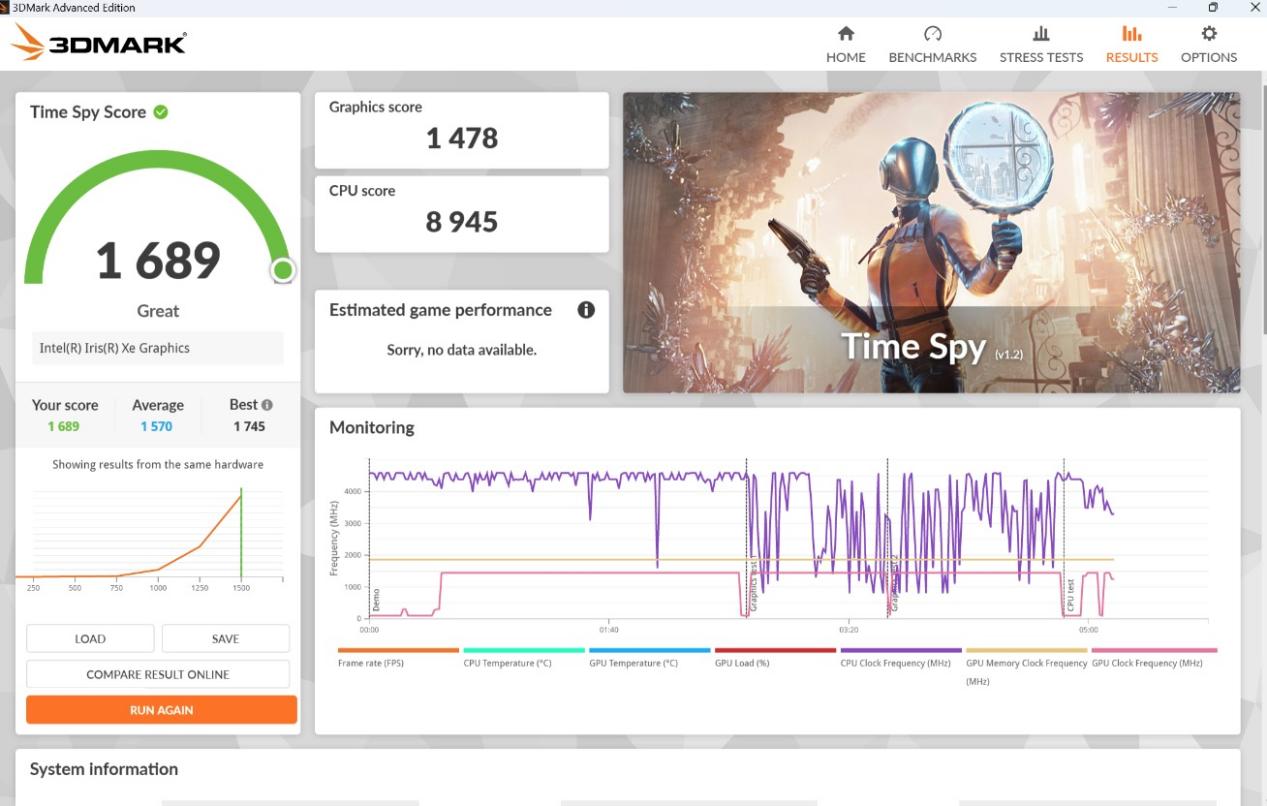
AI 功能使用體驗:流暢運行端側大模型,加速日常辦公室創作
前面我們介紹了華為MateBook D16和MateBook 14 的基礎性能表現,對於主打輕薄的商務辦公室本來說,都給出了超出預期的性能表現,而這同時也為兩款筆記本在AI 體驗方面奠定了基礎。
關注英特爾的朋友可能知道,其實他們很早就開始致力於將AI 功能引入到PC 中了,包括在架構層面提升AI 的性能,SoC 中內置Intel GNA 以加速低功耗AI在PC 上的應用等等。
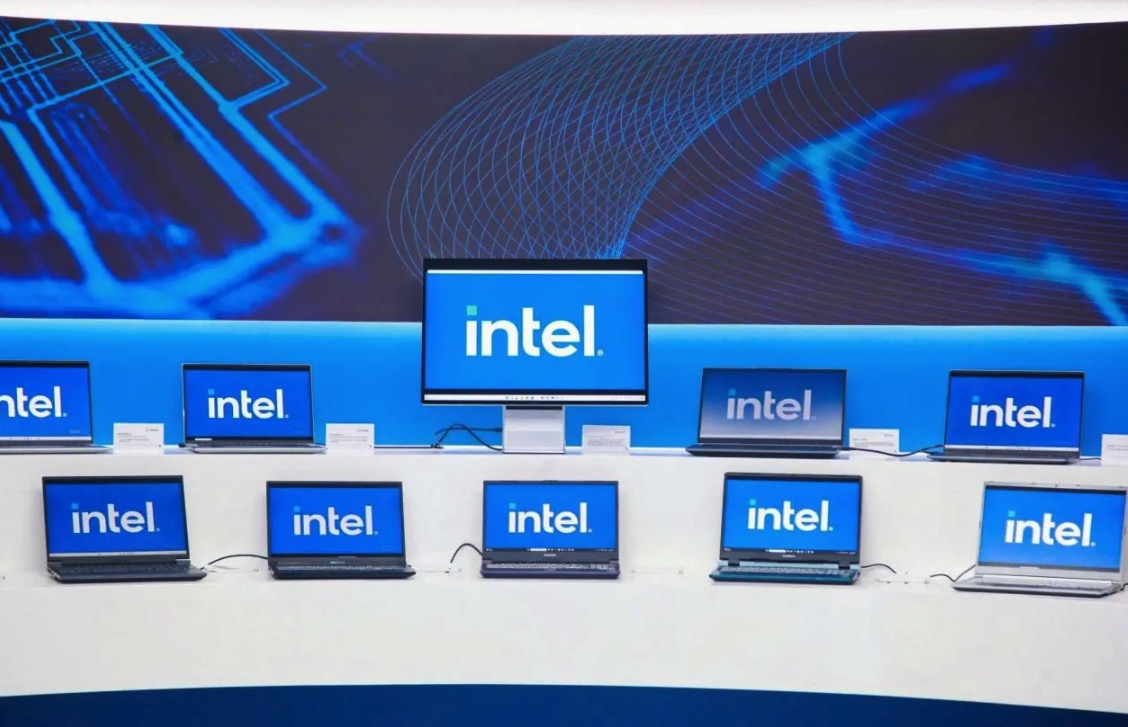
在13 代酷睿處理器上,英特爾加入了VNNI AI 專用指令,可提供包括Int8 推理加速、FP16 精度模型在內的本地AI 應用加速。對於生成式 AI,英特爾則透過模型優化,降低了模型對硬體資源的需求,進而提升了模型的推理速度,讓社群開源模型能夠很好地運行在個人電腦上。
具體來說,英特爾透過第13 代英特爾酷睿處理器XPU 的加速、low-bit 量化以及其它軟體層面的最佳化,讓最高達160 億參數的大語言模型,透過BigDL-LLM 框架運行在16GB 以上記憶體容量的個人電腦。
像包括LLAMA / LLAMA2、ChatGLM / ChatGLM2、MPT、Falcon、MOSS、Baichuan、QWen 等在內的模型都可以運行,同時英特爾也提供了易用的API 介面(Transformers、LangChain),並支援Windows、Linux 的作業系統。
同時值得一提的是英特爾還在最新的Meteor Lake 中加入了整合式NPU 單元,實現更高效能的AI 運算,同時CPU 和GPU 也都可以進行AI 運算,不同場景下會用不同的AI 單元去應對,彼此協調,如此一來,其整體能耗比相比前代最多可以提升8 倍之多。

接下來小編就用MateBook D16 和MateBook 14 來運行本地大語言模型,看看他們在終端側運行生成式AI 的體驗如何。
小編使用的是英特爾的大語言模型 Demo,其中整合了三個大語言模型,包括 ChatGLM2、LLaMA2 和 StarCoder。
體驗過程中,我們關閉筆記本的網絡,保證大模型是離線跑在端側的。
先在聊天助手功能下問一個人情世故的問題:「朋友向我借1 萬塊錢,但是我最近手頭也比較緊,該如何婉言拒絕?」在MateBook D16 上,大模型很快給出了比較得體的回答,First Latency 只有813.13ms。
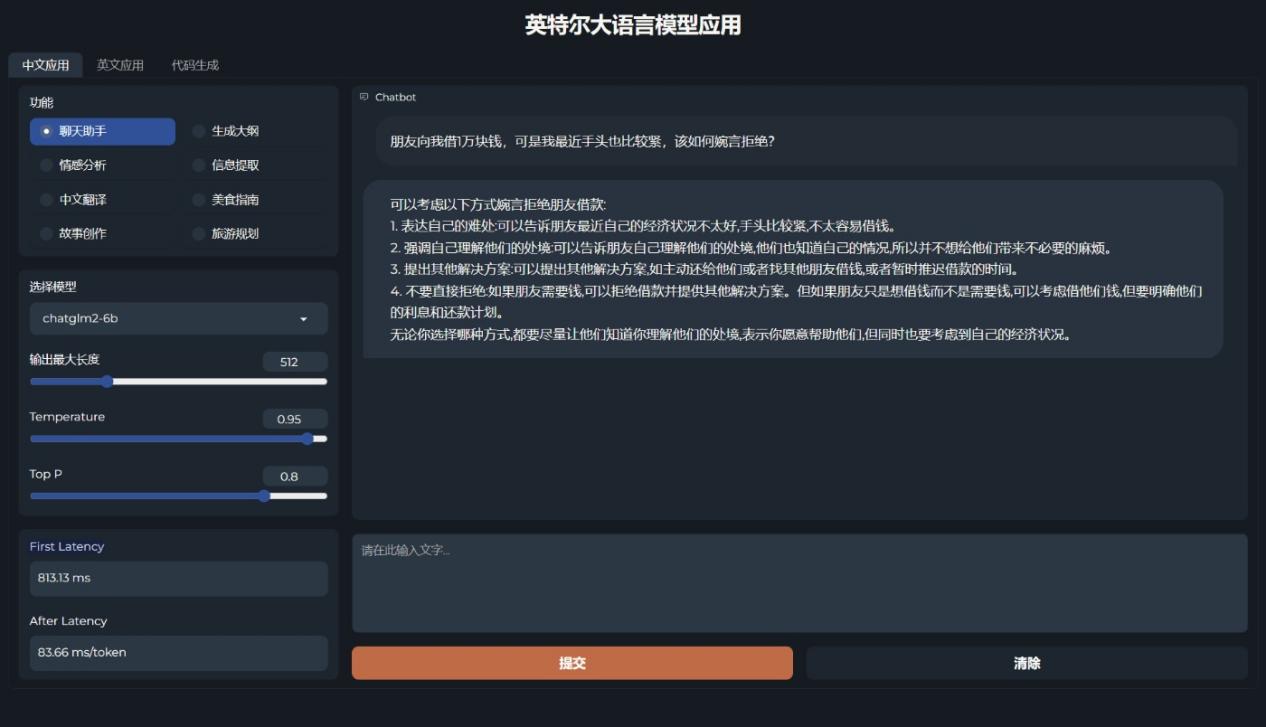
在MateBook D16 回答的時候,本站查看了系統效能資源佔用情況,i5-13420H 處理器CPU 佔用達到100%,GPU佔用31%,記憶體也佔用了5.8GB(56%),可見確實是在本地測運算的。
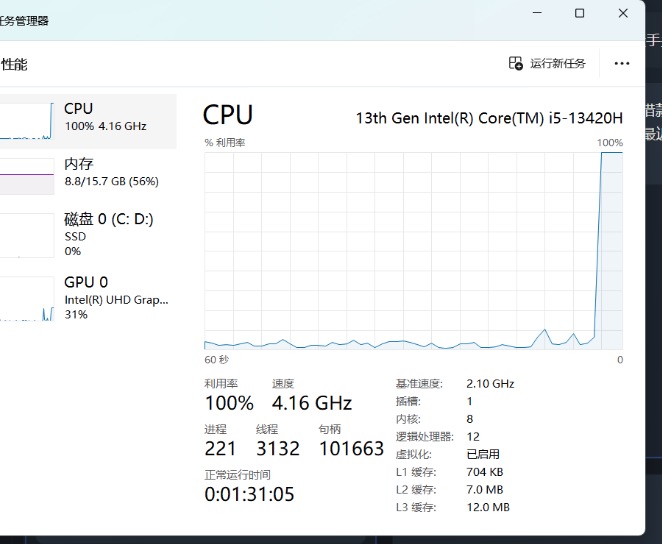
同樣的問題,MateBook 14 的回答也很快,延遲僅為 682.04ms。
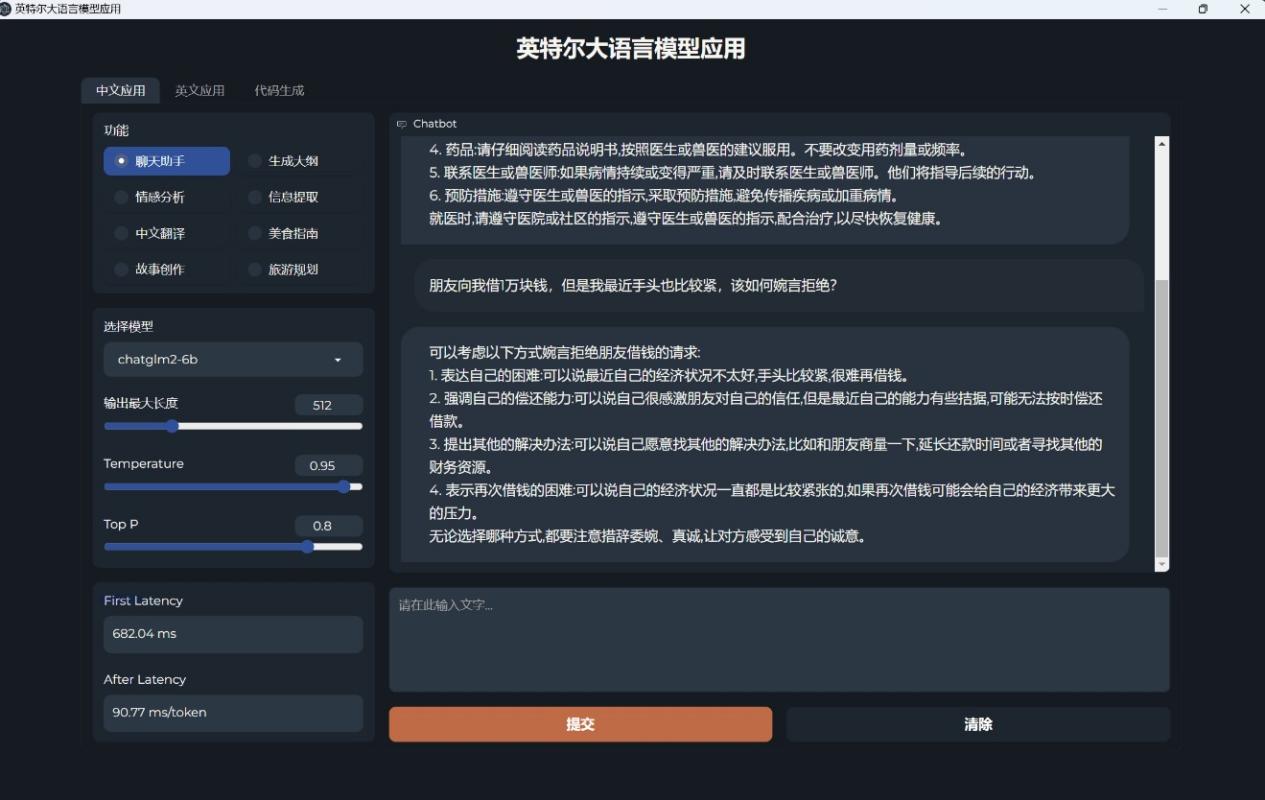
接著小編問了一個和工作相關更實用的問題,讓它幫忙寫一份公司產品溝通會的活動大綱,MateBook D16 很快就給了詳盡完整的大綱,First Latency 僅為1829.01ms,這要是自己寫,得花半天甚至一天。

MateBook 14 回答的速度還要更快一些,延遲僅為 1601.76ms。

最後小編讓它再寫一份公司迎新晚會的開場白,MateBook D16 給出的文案簡短、得體,基本上可以直接拿來用了,同時延遲僅803.96ms。
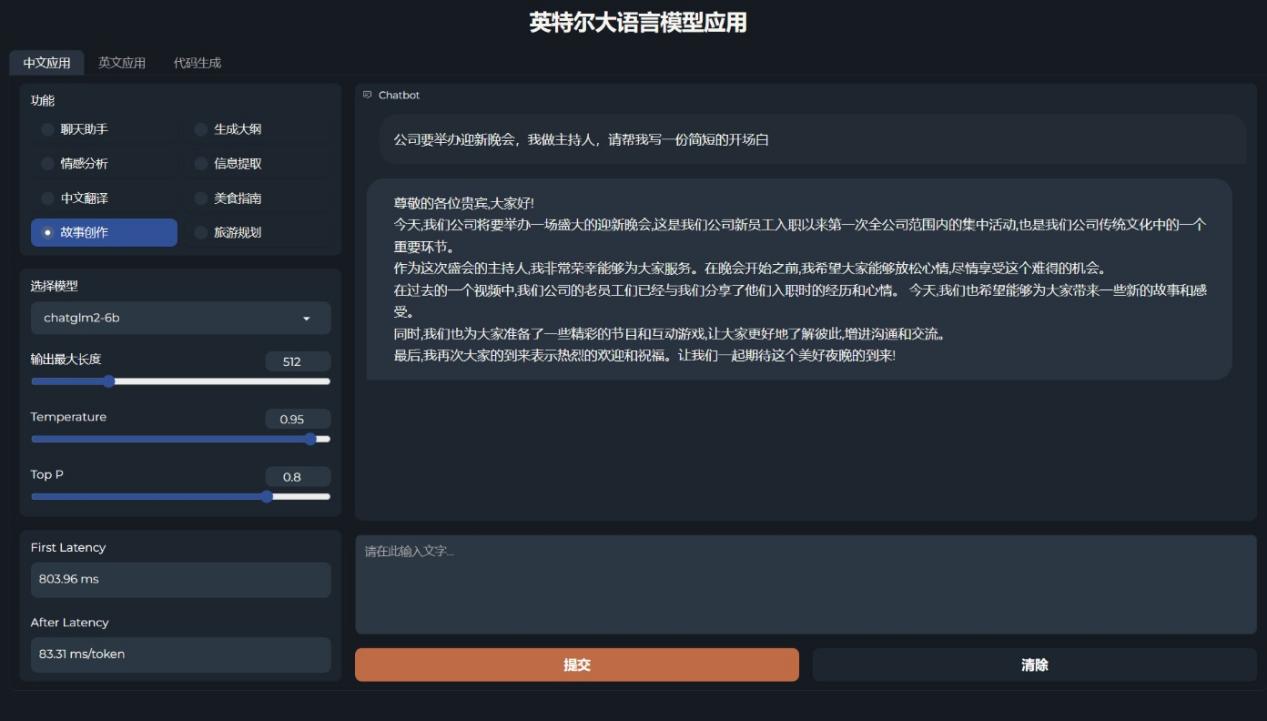
MateBook 14 的表現依舊是更出色,延遲僅為 704.23ms。
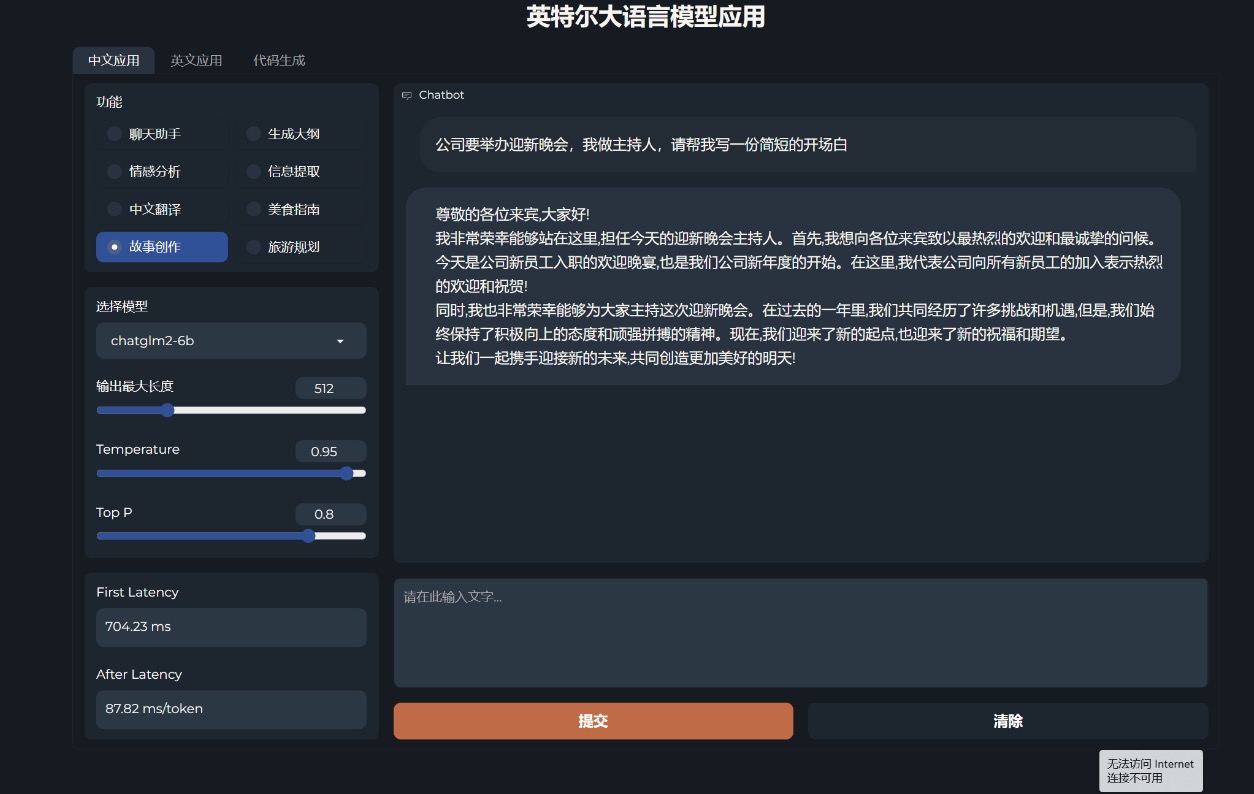
除了大語言模型,Intel13 代酷睿處理器也對生成式AI 文生圖模型做了最佳化,例如開源影像產生模型Stable Diffusion,英特爾啟用了OpenVINO 技術的加速,他們開發了一套AI 框架,透過一行程式碼的安裝,就可以加速PyTorch 模型的運作。透過 Stable Diffusion 的 WebUI,即便在核顯上也能流暢運作 Stable Diffusion Automatic1111。
下面我們也用 MateBook D16 和 MateBook 14 來體驗本地運行 Stable Diffusion 的效果。小編首先讓 Stable Diffusion 產生一張狗狗的圖像,MateBook D16 僅用了 37.4 秒就完成了創作。
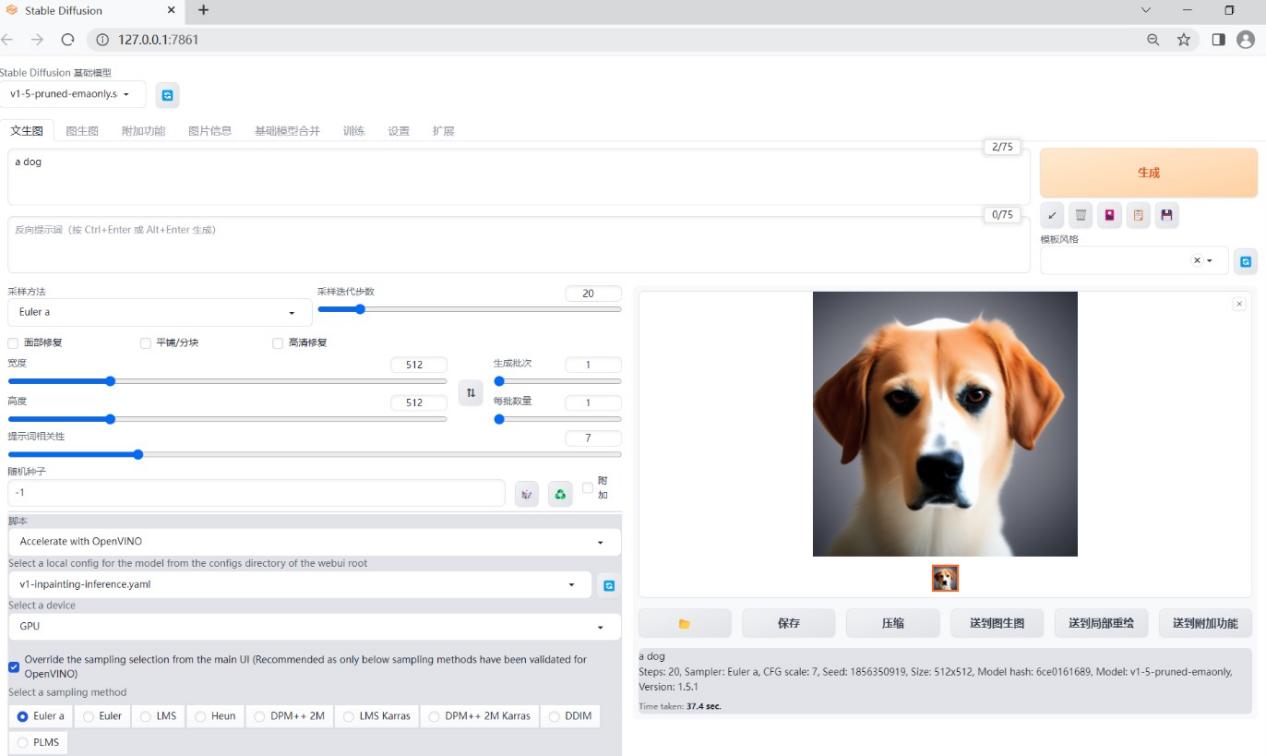
可以看到在文生圖的應用中,主要是i5-13420H 處理器的Intel UHD 13th Gen 核顯在發力,效能佔用率達到了96%。同時 CPU 佔用 23%,記憶體佔用也有 12.2GB(78%)。
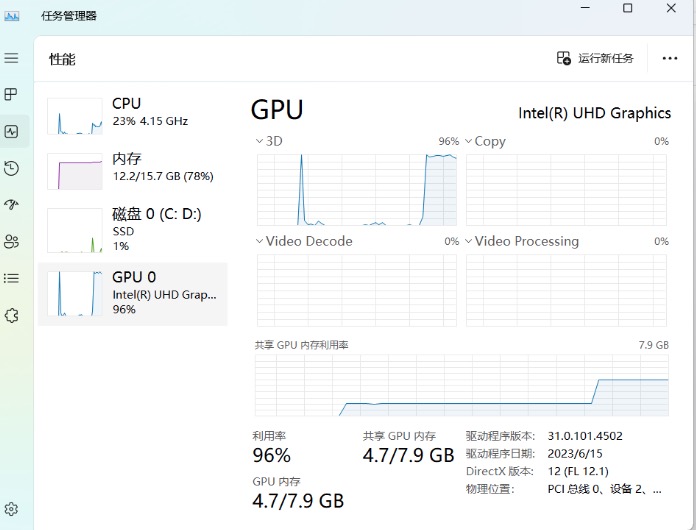
MateBook 14 這邊,產生一張狗狗的圖片只花了 31.4 秒。
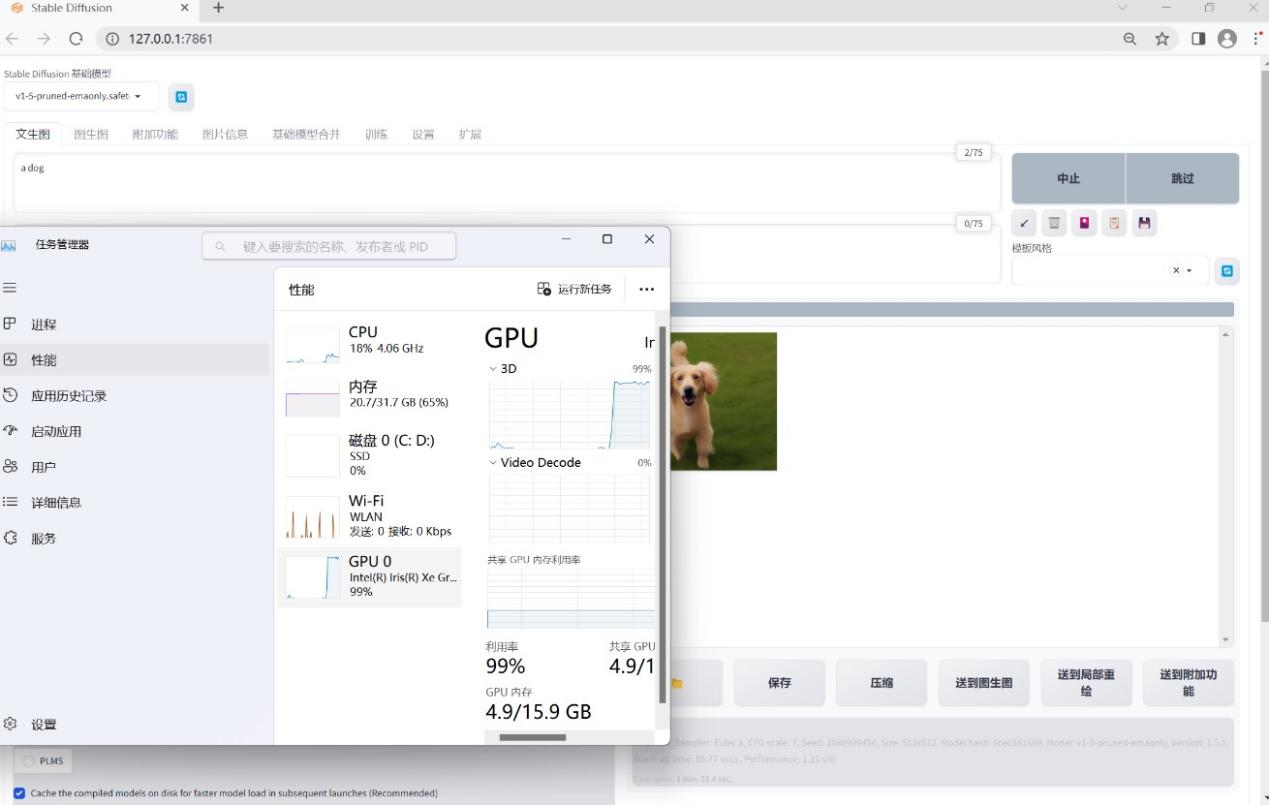
然後小編提高了一些難度,讓它生成一張“雨後的城市出現了彩虹”,條件相對較多,但也沒難倒MateBook D16,只花了36.9 秒就出圖了。
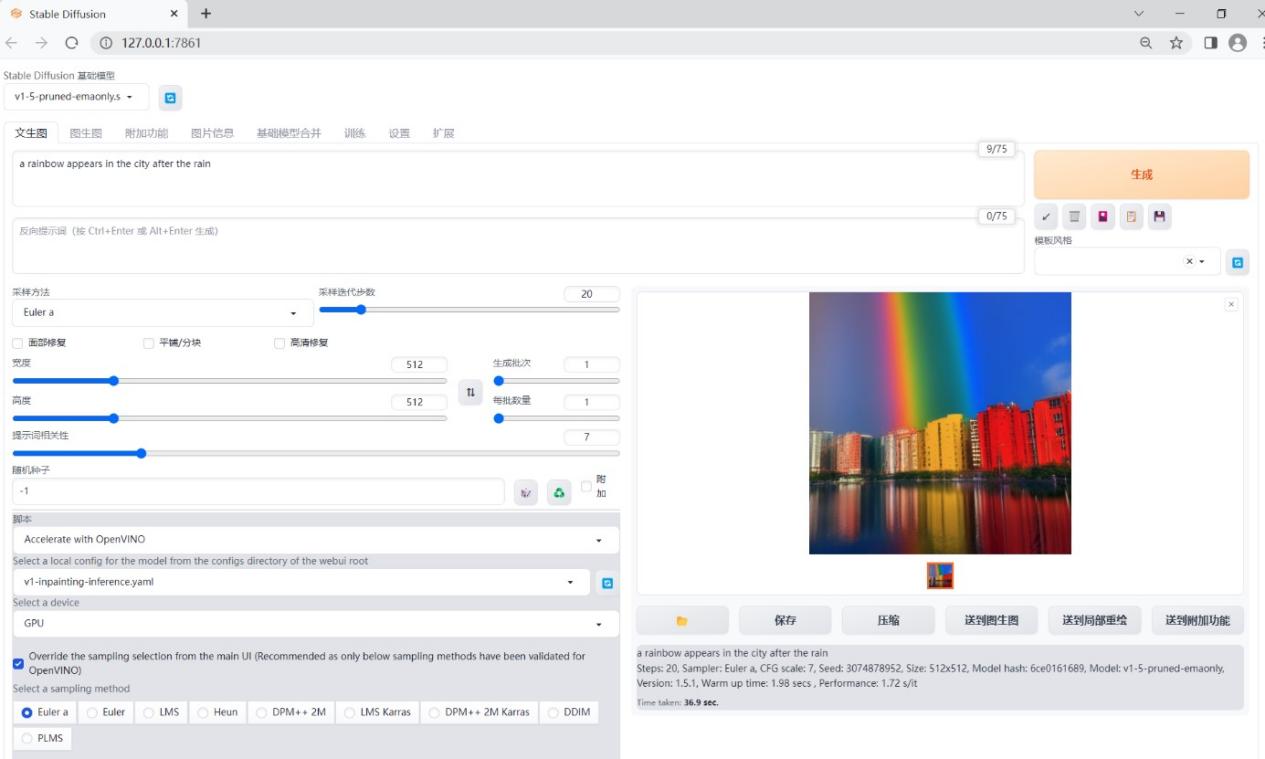
而 MateBook 14 用的時間更少,24.9 秒完成了創作,圖片整體品質也還不錯。
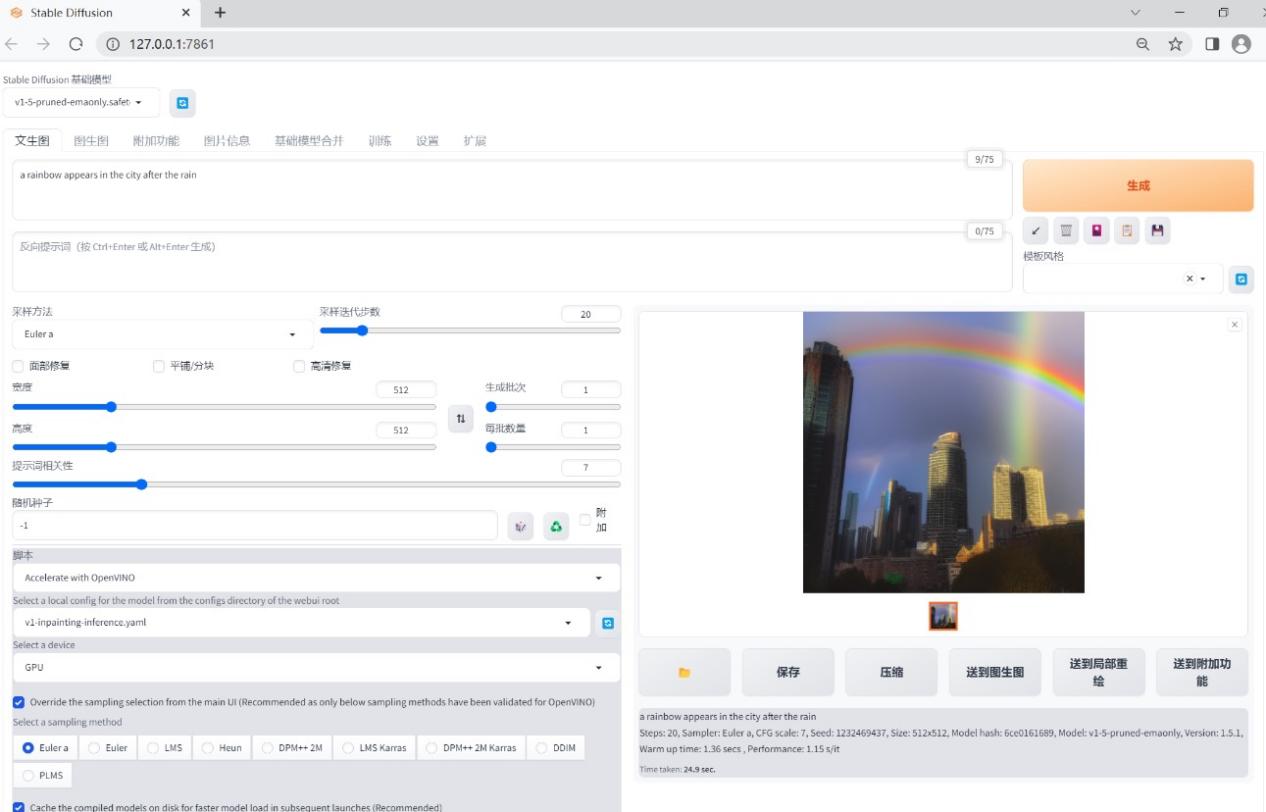
可以看到,在英特爾13 代酷睿處理器的加持下,MateBook D16 和MateBook 14 兩款產品都能十分流暢、穩定地在終端側運行生成式AI 大模型,從而用實實在在的AIGC 創作體驗為我們的工作和生產加速。
除了運行AI 大模型,在日常眾多應用場景中,華為MateBook D16 和MateBook 14 也能透過強大的AI 能力為我們的使用體驗帶來提升,例如辦公人士經常遇到的線上開會場景,這兩款華為MateBook 都可以透過AI 慧眼功能讓會議流程更加便利、順利。
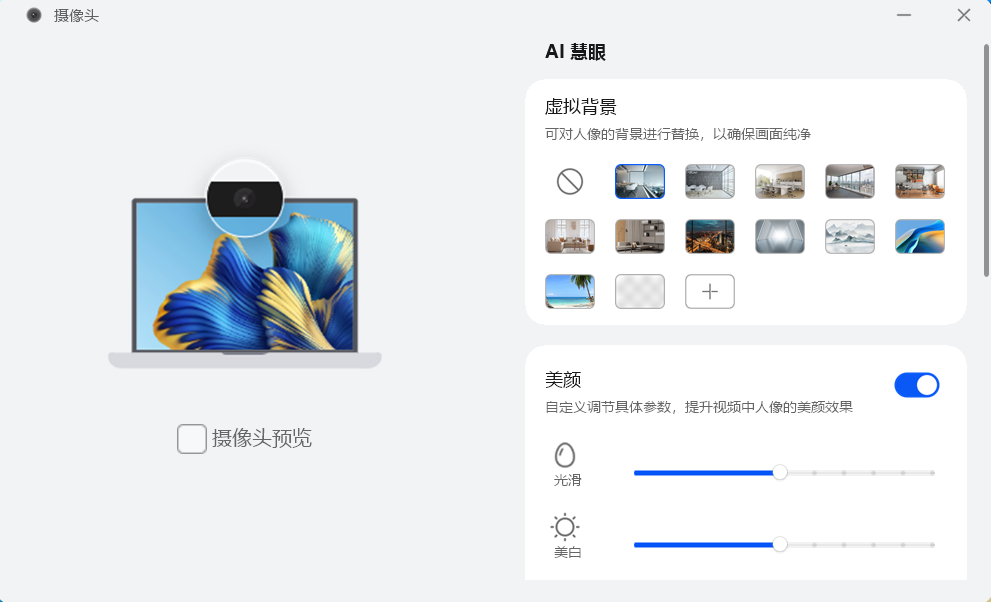
這裡我們以華為MateBook D16 為例,開啟AI 慧眼功能後,可以實現影隨人動的效果,就是視訊畫面會隨著你的移動即時調整方向,讓你始終處在畫面中間最佳的位置,這樣當你在會議中需要來回移動做一些演示時,可以保證自己不在畫面的邊角或者出畫,給參會者帶來困惑。
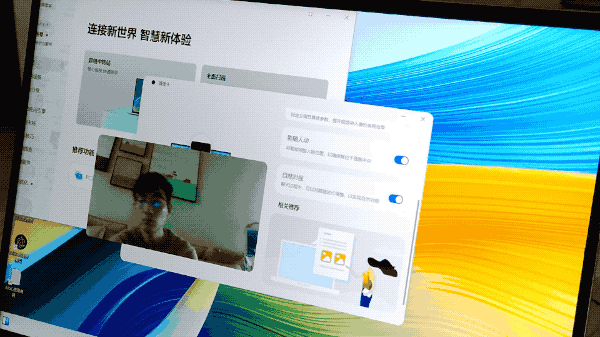
同時 AI 慧眼也能幫助你在會議中一鍵更換背景,確保環境的隱私。這些功能的實現,自然也離不開 13 代酷睿處理器即時、強大的 AI 運算能力。
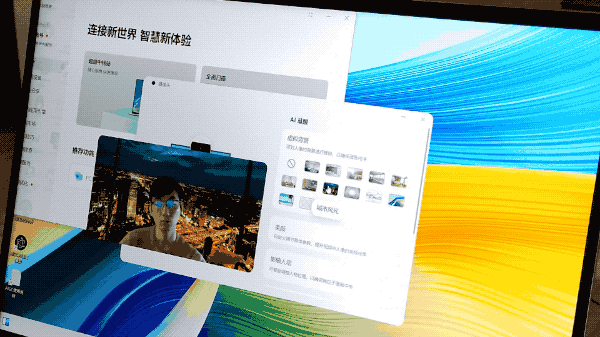
最後,本站也對兩款筆記本做了綜合辦公能力的測試,測試使用的是CrossMark 平台,首先用華為MateBook D16進行測試,得到1671 的總體成績,其中生產率得分1646 分,創造性得分1698 分,反應能力得分1665 分,每一項都遠超軟體校準的標準評級(1000)。
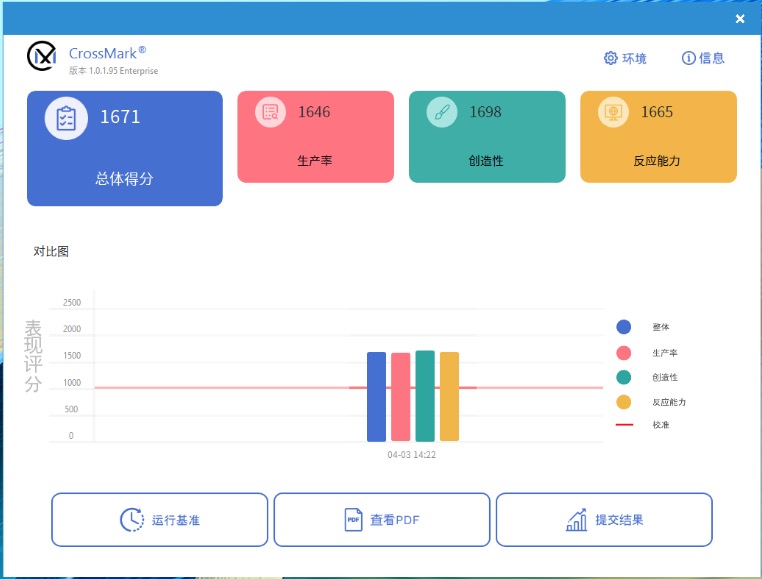
而華為MateBook 14 的總得分為1725 分,相比MateBook D16 同樣更為出色一些,其中生產率1698 分,創造性1733 分,反應能力1783 分。這說明這兩款筆記本都非常適合用於生產和辦公室。
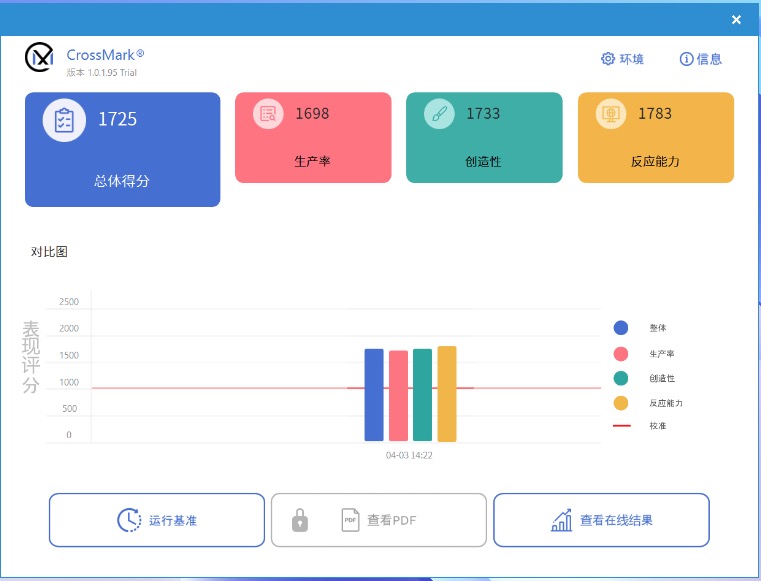
結語
透過上面的體驗和介紹,相信大家對於華為MateBook D16 和MateBook 14 這兩款產品已經有了更深入的了解,在英特爾第13 代酷睿處理器的加持下,他們不僅擁有對於輕薄辦公本來說非常強勁的通用處理性能,無論是辦公、學習、影音娛樂還是輕度遊戲需求都能輕鬆應對,同時13 代酷睿處理器對AI 運算的支持,特別是對生成式AI 大模型的優化,也讓這兩款筆記本具備了在本地側流暢運行大模型的能力,讓大家可以不受網絡的限制,隨時隨地享受AIGC 為自己帶來的辦公室處理和創作效率的提升。
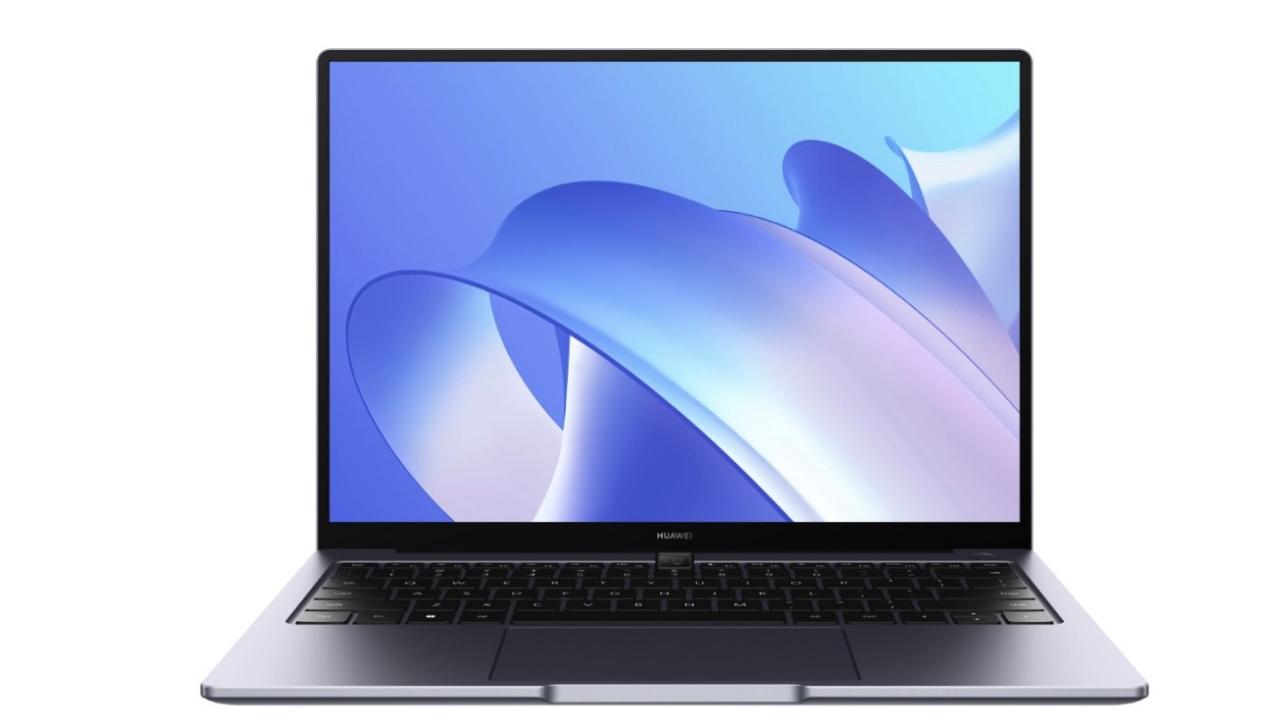
同時,本站測試的這兩款筆記本,MateBook D 16 16G 1TB 版本目前售價僅4599 元,MateBook 14 16G 1TB版本售價則為5,499 元,也就是說,5,000 元價位檔就能擁有一款堪稱全能的AI 助理,對於在校大學生以及剛步入職場的辦公族們來說,這無疑是目前極具性價比的AI PC 入門之選,如果你打算在今年更換筆記本,MateBook D 16 和MateBook 14,都可以作為你的重點考慮對象。
The above is the detailed content of Huawei MateBook D16/14 notebook experience: Intel 13th generation Core support, 5,000 yuan, an excellent choice for entry-level AI PC. For more information, please follow other related articles on the PHP Chinese website!

Hot AI Tools

Undresser.AI Undress
AI-powered app for creating realistic nude photos

AI Clothes Remover
Online AI tool for removing clothes from photos.

Undress AI Tool
Undress images for free

Clothoff.io
AI clothes remover

Video Face Swap
Swap faces in any video effortlessly with our completely free AI face swap tool!

Hot Article

Hot Tools

Notepad++7.3.1
Easy-to-use and free code editor

SublimeText3 Chinese version
Chinese version, very easy to use

Zend Studio 13.0.1
Powerful PHP integrated development environment

Dreamweaver CS6
Visual web development tools

SublimeText3 Mac version
God-level code editing software (SublimeText3)

Hot Topics
 What computer configuration is required for vscode
Apr 15, 2025 pm 09:48 PM
What computer configuration is required for vscode
Apr 15, 2025 pm 09:48 PM
VS Code system requirements: Operating system: Windows 10 and above, macOS 10.12 and above, Linux distribution processor: minimum 1.6 GHz, recommended 2.0 GHz and above memory: minimum 512 MB, recommended 4 GB and above storage space: minimum 250 MB, recommended 1 GB and above other requirements: stable network connection, Xorg/Wayland (Linux)
 vscode cannot install extension
Apr 15, 2025 pm 07:18 PM
vscode cannot install extension
Apr 15, 2025 pm 07:18 PM
The reasons for the installation of VS Code extensions may be: network instability, insufficient permissions, system compatibility issues, VS Code version is too old, antivirus software or firewall interference. By checking network connections, permissions, log files, updating VS Code, disabling security software, and restarting VS Code or computers, you can gradually troubleshoot and resolve issues.
 How to run java code in notepad
Apr 16, 2025 pm 07:39 PM
How to run java code in notepad
Apr 16, 2025 pm 07:39 PM
Although Notepad cannot run Java code directly, it can be achieved by using other tools: using the command line compiler (javac) to generate a bytecode file (filename.class). Use the Java interpreter (java) to interpret bytecode, execute the code, and output the result.
 Can vscode be used for mac
Apr 15, 2025 pm 07:36 PM
Can vscode be used for mac
Apr 15, 2025 pm 07:36 PM
VS Code is available on Mac. It has powerful extensions, Git integration, terminal and debugger, and also offers a wealth of setup options. However, for particularly large projects or highly professional development, VS Code may have performance or functional limitations.
 What is vscode What is vscode for?
Apr 15, 2025 pm 06:45 PM
What is vscode What is vscode for?
Apr 15, 2025 pm 06:45 PM
VS Code is the full name Visual Studio Code, which is a free and open source cross-platform code editor and development environment developed by Microsoft. It supports a wide range of programming languages and provides syntax highlighting, code automatic completion, code snippets and smart prompts to improve development efficiency. Through a rich extension ecosystem, users can add extensions to specific needs and languages, such as debuggers, code formatting tools, and Git integrations. VS Code also includes an intuitive debugger that helps quickly find and resolve bugs in your code.
 How to use VSCode
Apr 15, 2025 pm 11:21 PM
How to use VSCode
Apr 15, 2025 pm 11:21 PM
Visual Studio Code (VSCode) is a cross-platform, open source and free code editor developed by Microsoft. It is known for its lightweight, scalability and support for a wide range of programming languages. To install VSCode, please visit the official website to download and run the installer. When using VSCode, you can create new projects, edit code, debug code, navigate projects, expand VSCode, and manage settings. VSCode is available for Windows, macOS, and Linux, supports multiple programming languages and provides various extensions through Marketplace. Its advantages include lightweight, scalability, extensive language support, rich features and version
 What is the main purpose of Linux?
Apr 16, 2025 am 12:19 AM
What is the main purpose of Linux?
Apr 16, 2025 am 12:19 AM
The main uses of Linux include: 1. Server operating system, 2. Embedded system, 3. Desktop operating system, 4. Development and testing environment. Linux excels in these areas, providing stability, security and efficient development tools.
 How to check the warehouse address of git
Apr 17, 2025 pm 01:54 PM
How to check the warehouse address of git
Apr 17, 2025 pm 01:54 PM
To view the Git repository address, perform the following steps: 1. Open the command line and navigate to the repository directory; 2. Run the "git remote -v" command; 3. View the repository name in the output and its corresponding address.





